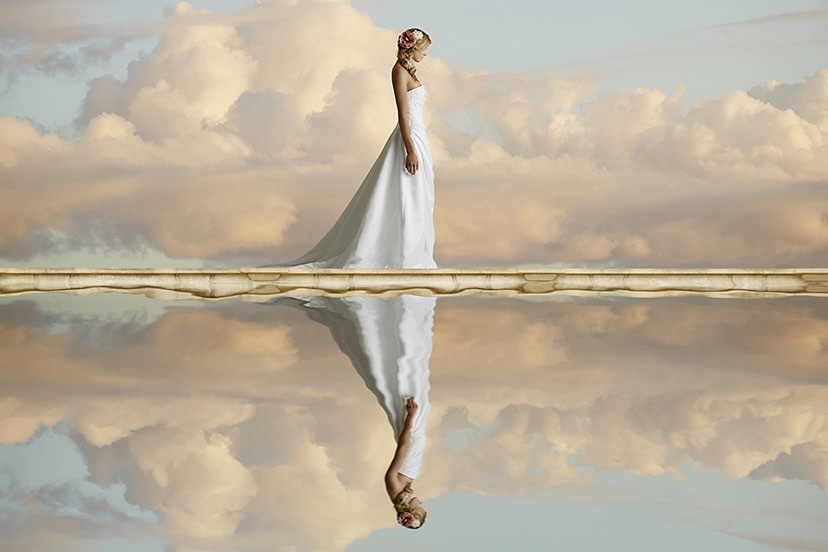What is colour space and why does it matter? In Part 1, we talked about the basic tools needed in fine art printing. Part 2 will take us into the world of colour space and the way it impacts our perception and reproduction of colour during printing.

What is a colour space?
Think of a colour space as a library of colours. There is a library of colours for visible light (Red, green and blue, hence RGB) and a library for printed colours (Cyan, Magenta, Yellow and Black, hence CMYK).
RGB and CMYK libraries share many common secondary colours in their collection, but some colours are unique to each library. Accuracy in colour reproduction can be affected when we capture images with our DSLR using the visible light library, and print using the printed colour library – which is often limited by the number of ink colours used by a particular printer.

What is RGB colour space?
RGB simply stands for Red, Green and Blue light. Visible light, be it from the sun or your lamp, is made up of these 3 colours. It is the combination of these 3 basic colours that makes up the entire spectrum of secondary colours. This article when viewed on your computer display or smartphone, is displayed using colours from the sRGB colour space – one of the RGB libraries.
In the previous article about INTRODUCTION TO FINE ART PRINTING, we ascertained that a digital display is typically a 16-bit RGB device and can display colours from a palette of 16.8 million colours. However, your eyes are able to discern a wider range of colours than those shown on the sRGB colour space on screen. However, to maintain colour reproduction consistency with the millions of sRGB digital displays and online sharing of images, the world at large adheres to a common sRGB standard, so as to avoid colour reproduction problems that occur when converting from one colour space to another.
This common sRGB standard, or colour space, is what allows digital displays to understand image data that is stored on an SD card, captured by a digital camera.
Choosing between sRGB and Adobe RGB colour space
For the purpose of fine-art printing where colour accuracy is of the utmost importance, it is advisable to set the in-camera colour space to Adobe RGB via the camera’s menu system. Adobe RGB is the preferred colour space for capturing images for fine art prints, as it has a significantly wider colour range – approximately 35% more than sRGB.

In the previous article, we have also emphasized the importance of shooting in the camera manufacturer’s RAW file format as it retains all the information captured by the camera’s sensor. The combination of shooting a scene in Adobe RGB space and RAW format, allows the downline manipulation of imaging data without loss of data, eventually allowing professional printers such as the Canon imagePROGRAF PRO-500 to produce enhanced colour results and smoother gray tones.
What is CMYK colour space?
The printed colour space, however, uses a different colour modeling system, component colours and therefore a different colour space.
An entry-level colour printer typically uses the combination of 4 colour inks – Cyan, Magenta, Yellow and Black – to create the wide range of secondary colour on paper. Each colour can be adjusted in intensity from zero to a hundred percent. For example, a bright red might contain 2% cyan, 93% magenta, 90% yellow, and 0% black.
A fine art printer like the Canon imagePROGRAF PRO-500 uses a 12-ink system with 4 monochromatic inks. As you can imagine, the range of colour possibilities far exceeds of ordinary inkjet printers and will truly reflect the colour fidelity of the captured scene.

Getting the RGB and CMYK colour space to work together
A rainbow looks amazing when captured with a DSLR and viewed on a digital display. However, the colours of a rainbow captured in RGB colour space, may not be accurately printed on a printer that uses the CMYK printing process. This is because the colours that are projected from a real rainbow lies outside the range or gamut of the CMYK colour system.
Similarly, there are colours that can be reproduced on your digital displays such as orange hues that CMYK printers will find difficult to achieve.
The diagram below shows the difference in the range of colours displayed by sRGB, Adobe RGB and CMYK colour space.

So how do we breach the gaps between these colour spaces during the colour printing process? Simply by using an independent colour description standard called the CIE colour space.
CIE colour space objectively describes any colour from the perspective of the human eye. For example, the way the eye perceives the colour indigo or maroon, can be mathematically referenced in the CIE colour space. The CIE value for indigo or maroon is an objective way of identifying colour that both RGB and CMYK devices can make reference to. By mathematically describing a colour in the way our eyes see, the colour conversion process from RGB colour devices (e.g. a DSLR camera) to CMYK colour devices (e.g. a printer) becomes more reliable and consistent.
In our next article, we will look at how the use of colour profiles makes fine art printing possible.
Receive the latest updates on photography news, tips and tricks by signing up with us!

































